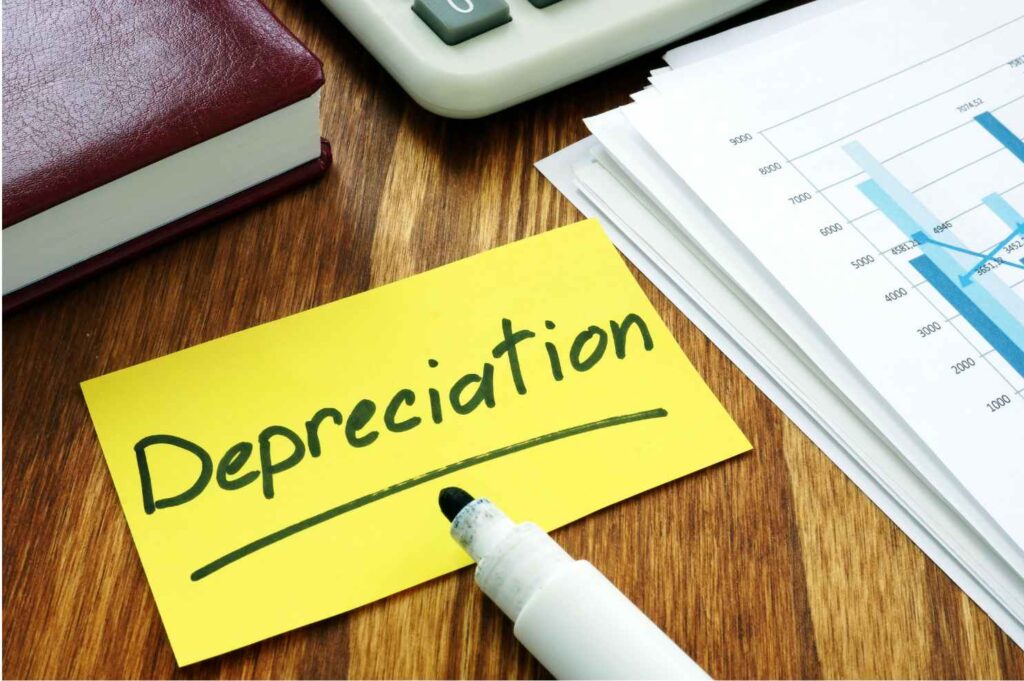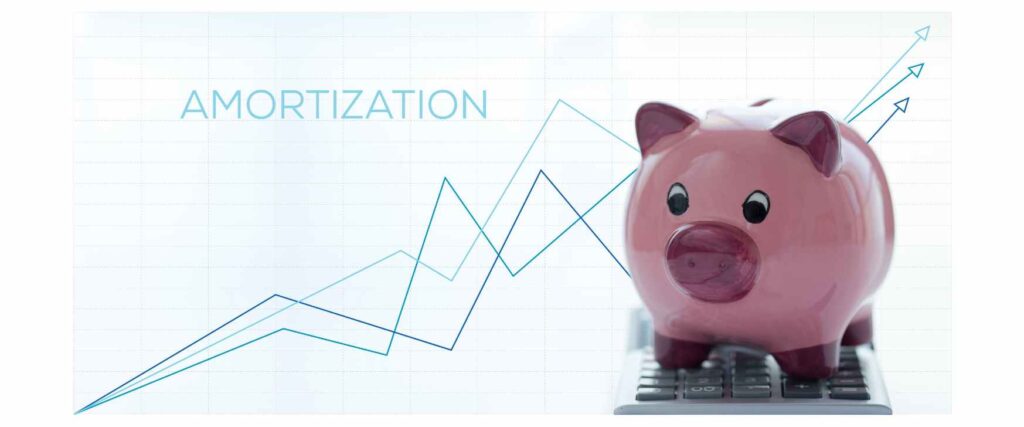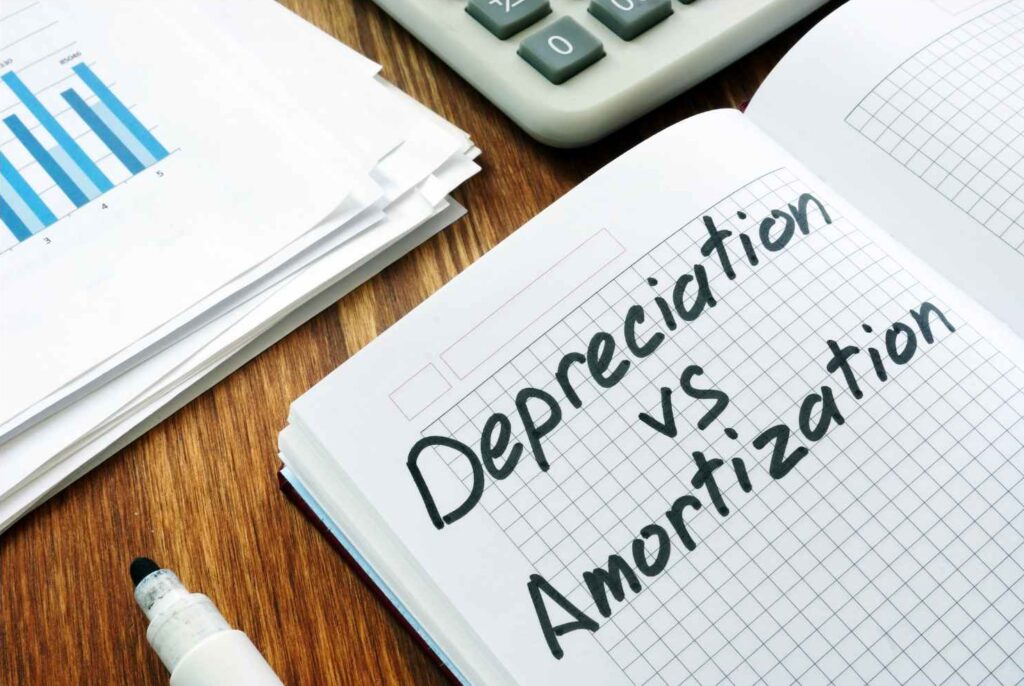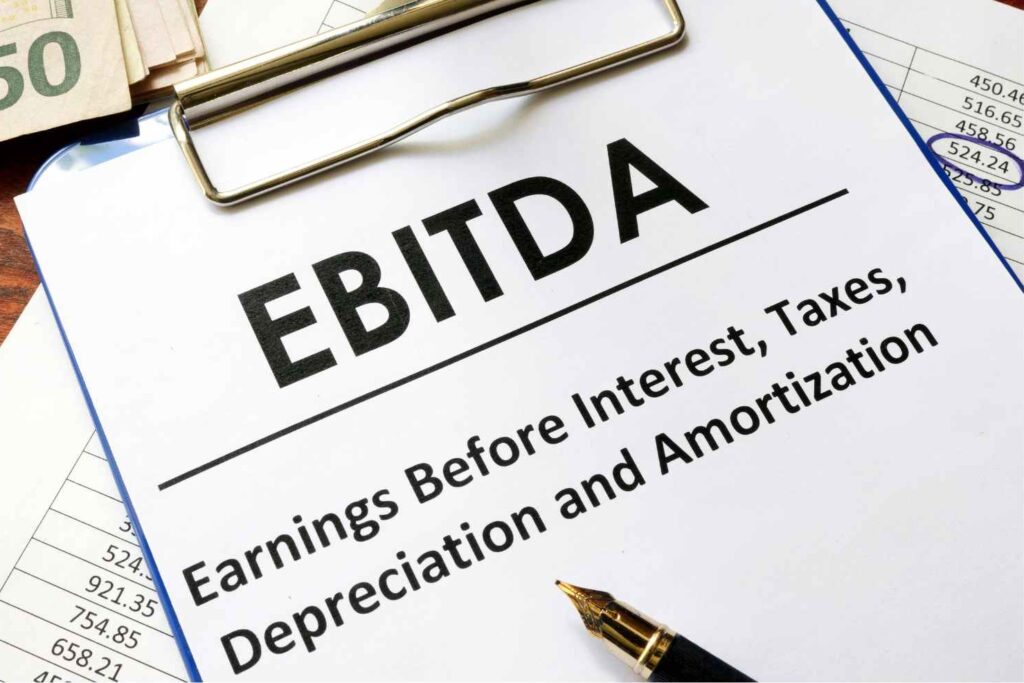EBITDA is the abbreviation for Earnings Before Interest, Taxes, Depreciation, and Amortization, and is a financial metric that provides a snapshot of a company’s operational performance. It is calculated by taking a company’s net income and adding back interest, taxes, depreciation, and amortization.
Depreciation and amortization are two financial terms that may sound complicated, but they are crucial concepts to grasp, not only in the context of EBITDA but also if you’re managing finances or trying to run a successful business.
In simple terms, depreciation, and amortization both refer to the way assets lose value over time.
Depreciation Meaning:
Depreciation is like the wear and tear that happens to your favourite pair of shoes over time. Imagine you buy a shiny new pair of sneakers, and as you use them every day, they start to lose their brand-new look.
Similarly, when a business buys assets like machinery, vehicles, or buildings, these assets experience a decrease in value as they are used over time.
Businesses use depreciation to spread out the cost of these assets over their useful life. Instead of recording the entire cost of a piece of equipment in one go, they allocate the cost over several years.

This gradual reduction in value is a way for companies to account for the wear and tear or obsolescence of their assets.
Example of Depreciation
Let’s say a business buys a delivery truck for $50,000 with an estimated useful life of 10 years. Instead of deducting the entire $50,000 from their income in the first year, they might spread it out, deducting $5,000 each year for 10 years. This process reflects the decreasing value of the truck as it ages and is used for business operations.
Amortization Meaning:
Amortization is like depreciation but is primarily applied to intangible assets, such as patents, copyrights, or trademarks. Think of amortization as the way you’d pay off a loan, bit by bit, over time. In the business world, when a company purchases intangible assets, the cost of these assets is spread out over their estimated useful life through amortization.
Another way to explain amortization is to understand it as an accounting term that specifically refers to the process of allocating the cost of an intangible asset (like a patent or copyright) over a period of time.
It’s not about making payments to clear a debt but rather about recognizing the gradual consumption or expiration of the asset’s value over its useful life.

Intangible assets can have varying useful lives. It’s crucial to estimate these accurately for amortization purposes to reflect the true economic benefit derived from these assets. I want to show you what I mean by this, because it’s an important point.
Let’s say a company buys something valuable that isn’t a physical item (like a patent). The company pays a certain amount for this asset, and instead of recording the full cost all at once, they spread it out over time. This spreading out of the cost as mentioned above is called “amortization.”
Now, it’s crucial for the company to estimate, or guess, how long this valuable thing will be useful to them. If they estimate wrong, it can affect their financial statements. Why? Because amortization is like showing how much this valuable thing is worth each year. If they estimate too short a time, they might say it’s less valuable than it really is. If they estimate too long a time, they might say it’s more valuable than it really is.
Example of Amortization:
A company buys a patent. Let’s say the patent costs $50,000. This patent gives them the exclusive right to use a particular software for their business.
If they estimate that the patent will be useful for 10 years, they might say, “Okay, each year, the value of this patent is $5,000 (because $50,000 / 10 years = $5,000 per year).” So, each year, on their financial statements, they’ll show $5,000 as an expense for using this patent.
But, if they estimated that the patent would only be useful for 5 years, they’d say, “Each year, the value of this patent is $10,000 (because $50,000 / 5 years = $10,000 per year).” So, they’d show $10,000 as an expense each year.
So, estimating how long this patent will be useful is crucial. If they estimate it accurately, their financial statements better reflect the true value of these assets to their business each year. If they estimate it wrong, their record keeping and financial statements might not show the right picture of the value of what they own.
Difference Between Depreciation and Amortization:
While both depreciation and amortization deal with the gradual reduction in value of assets, there are key differences between the two.
Depreciation applies to tangible assets like machinery and buildings. Amortization is used for intangible assets such as patents and copyrights.

In business, depreciation and amortization are essential tools for accurately reflecting the true cost of assets over time. By spreading out these costs, companies can better match their expenses with the benefits they gain from using these assets.
Think of depreciation as the natural aging process of tangible assets. It’s like your favourite pair of shoes losing their shine over the years.
On the other hand, amortization is like paying off a loan for intangible assets, ensuring that the cost aligns with the ongoing benefits.
Understanding Depreciation and Amortization
Whether you’re managing personal finances or involved in business operations, understanding depreciation and amortization can provide you with valuable insights into how assets are valued and expenses are managed over time.
These simple concepts help businesses make informed financial decisions and ensure a more accurate representation of their financial health.
They are especially important in financials when selling a business. The EBITDA financial metric is a valuable tool when valuing or selling a business. To estimate the value of the entire business, a valuation multiple is applied to the EBITDA.
For example if your EBITDA is $100,000 and your industry multiplier is x3, then you would be selling your business for $300,000.
EBITDA
Earnings Before Interest, Taxes, Depreciation, and Amortization.
Let’s break down each component:
1. Earnings (Net Income):
Earnings, also known as net income, is the profit a company has earned after deducting all its expenses from its revenue. This includes costs such as operating expenses, interest, taxes, depreciation, and amortization.
2. Interest:
Interest refers to the cost of borrowing money. Companies often have loans or other forms of debt on which they pay interest. By adding back interest to net income, EBITDA provides a clearer picture of a company’s operating performance without the impact of its financing decisions.
3. Taxes:
Taxes, including income taxes, are a significant expense for businesses. Adding back taxes to net income in the EBITDA calculation helps focus on the company’s operational profitability, excluding the influence of tax rates and strategies.
4. Depreciation:
Depreciation is the systematic allocation of the cost of tangible assets (like buildings, machinery, or vehicles) over their useful lives. By adding back depreciation, EBITDA removes the non-cash impact of asset depreciation, providing a more cash-centric view of a company’s earnings.
5. Amortization:
Amortization is similar to depreciation but applies to intangible assets (such as patents, copyrights, or trademarks). Including amortization in the EBITDA calculation adjusts for the non-cash expense related to the gradual reduction in the value of intangible assets.

EBITDA Formula
Here’s the formula for calculating EBITDA:
EBITDA = Net Income + Interest + Taxes + Depreciation + Amortization
EBITDA is a widely used financial metric because it offers a clearer picture of a company’s core profitability and operating performance, independent of its capital structure and non-cash expenses. It is often used by investors, analysts, and creditors to assess a company’s ability to generate cash flow from its operations.
However, it’s important to note that while EBITDA provides valuable insights, it does not consider changes in working capital, capital expenditures, or other non-operating items that can impact a company’s overall financial health.
EBITDA can be influenced by non-recurring items, such as one-time gains or losses. Analysts and investors may adjust EBITDA to exclude these items to get a more accurate picture of ongoing operational performance.
Depreciation and amortization impact a company’s income statement by reducing reported profits. However, they don’t represent a cash outflow, which is important to consider when assessing a company’s cash flow.
As with any financial metric, it should be used in conjunction with other measures for a comprehensive analysis.
Conclusion
Understanding the nuances and considerations related to depreciation, amortization, and EBITDA allows for a more informed analysis of a company’s financial statements and performance. It’s advisable to keep these factors in mind when interpreting financial data and making financial decisions.

